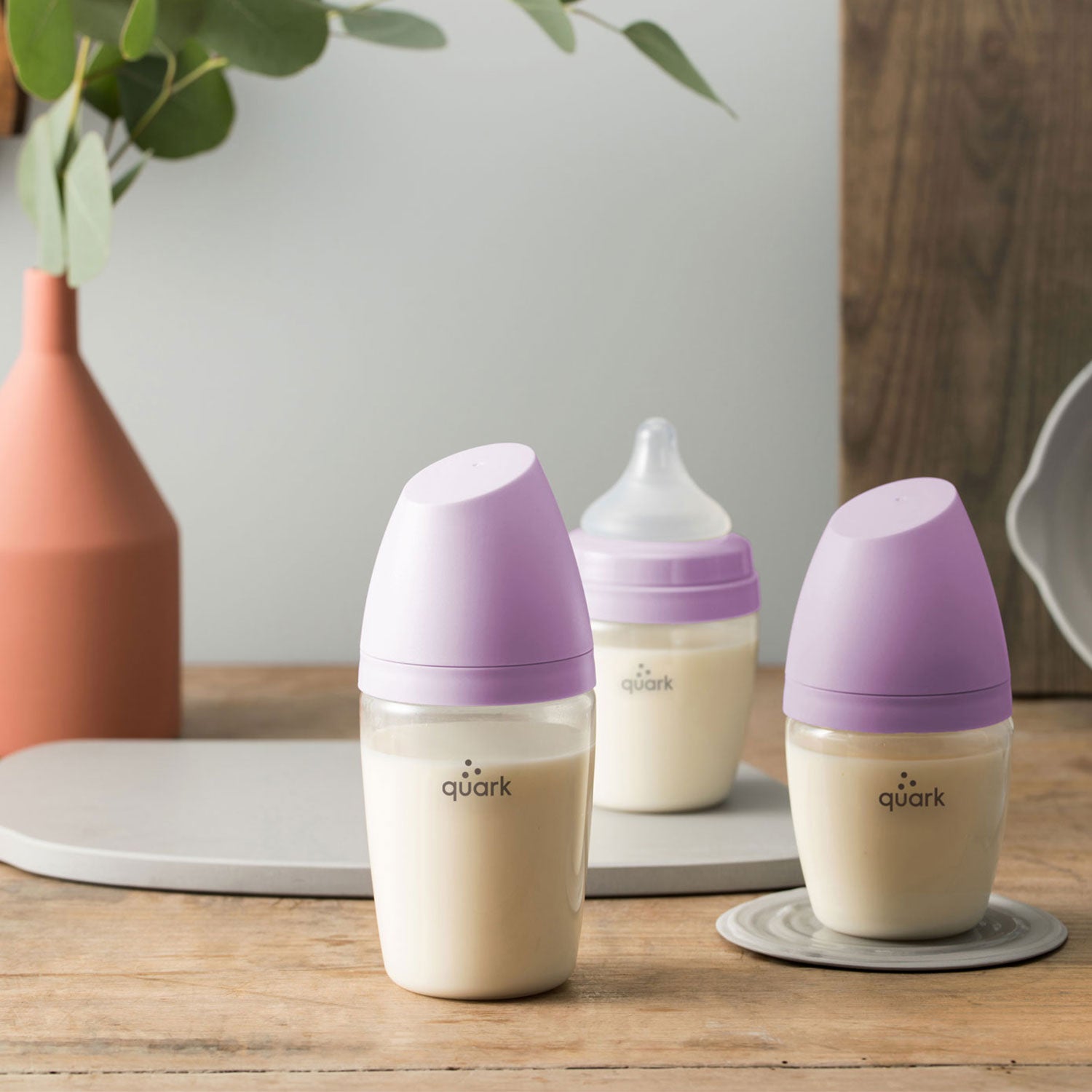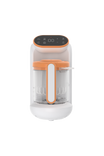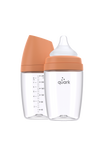When it comes to feeding your baby, choosing the right bottle is essential for their health, comfort, and feeding success. Whether you opt for breastmilk or formula, a high-quality baby bottle can make feeding smoother and more enjoyable. Of course we're biased, but the award-winning BuubiBottle collection, known for its innovative features and thoughtful design, is a great option for parents seeking a more premium, reliable feeding solution. This guide will walk you through the most important features to look for in a baby bottle and the materials to consider when making your choice.
Why Anti-Colic Bottles Matter
Colic, often linked to digestive discomfort, affects about 1 in 5 babies and can cause prolonged crying and fussiness. Anti-colic bottles help reduce air intake during feeding, minimizing the likelihood of gas and bloating. These bottles typically feature a valve or ventilation system that ensures smooth milk flow and less swallowed air.
Benefits of Anti-Colic Bottles
- Consistent Milk Flow: Prevents interruptions and reduces air intake.
- Eases Digestive Discomfort: Minimizes gas buildup, making feeding more comfortable for your baby.
Investing in a bottle with anti-colic functionality can significantly enhance your baby's feeding experience.
The Importance of Round Nipples for Combined Feeding
For parents combining breastfeeding and bottle-feeding, a round nipple designed to mimic the mother’s breast is essential. This design reduces the risk of nipple confusion, allowing babies to switch between breast and bottle with ease.
The RealFeel nipple stands out in this category (don't take our word for it, ask your IBCLC), offering a soft, breast-like texture and natural shape that promotes a familiar latch for babies transitioning between feeding methods.
Key Features of Round Nipples
- Breast-like Shape: Designed to mimic the natural contour of a mother's nipple.
- Comfortable Feeding Experience: Soft and flexible materials replicate the feel of breastfeeding.
Choosing a bottle with a high-quality round nipple ensures that combined feeding is stress-free for both parents and babies.
Adapting to Changing Flow Rates
As your baby grows, their feeding needs change, requiring different flow rates to match their developmental stage. A bottle with interchangeable nipples offering slow, medium, and fast flow rates is a must-have for accommodating these transitions.
Choosing the Right Flow Rate
- For Newborns: Slow flow helps mimic breastfeeding and prevents overeating.
- For Older Babies: Faster flow rates match improved feeding coordination and larger appetites.
Selecting a bottle system with flexible options ensures a smooth feeding journey as your baby develops.
The Case for Glass Bottles
Glass baby bottles are a classic choice, highly valued for their safety and durability. However, as with any material, glass bottles come with both advantages and drawbacks.
Pros of Glass Bottles
- Chemical-Free: Naturally free from microplastics and (usually) harmful chemicals, keeping milk pure.
- Durable: Borosilicate glass resists thermal shock and is safe for freezing, boiling, and dishwashing.
- Eco-Friendly: Glass is a recyclable and sustainable material, making it environmentally friendly.
Cons of Glass Bottles
- Weight: Glass bottles are heavier than silicone or plastic, which can be inconvenient for travel or longer feeds.
- Breakability: Even with durable construction, glass can shatter if dropped.
- Cost: Glass bottles typically come at a higher price point.
Despite their drawbacks, glass bottles are an excellent choice for parents prioritizing safety and sustainability.
Silicone Baby Bottles: A Flexible Alternative
Silicone bottles are becoming increasingly popular due to their soft, lightweight design and safe composition. While they have unique benefits, they also come with limitations.
Pros of Silicone Bottles
- Non-Toxic: Silicone is largely free from BPA, phthalates, and PVC, offering peace of mind for parents.
- Lightweight and Flexible: Easy for babies to hold and unlikely to break.
- Heat Resistant: Safe for sterilization and boiling, simplifying cleaning.
Cons of Silicone Bottles
- Odor and Stain Retention: Silicone tends to absorb odors and discolor over a relatively short time.
- Less Durable: Prolonged use and exposure to heat can cause stretching or warping.
- Cost: Typically more expensive than plastic options.
Silicone bottles are a practical option for parents seeking a soft, non-toxic material, but they may not hold up well for long-term use.
Various Types of Plastic Baby Bottles: Pros and Cons
Plastic bottles remain a popular choice due to their affordability and versatility. However, different types of plastic offer varying levels of safety and durability.
Types of Plastic Bottles
- Polypropylene (PP): Lightweight, BPA-free, and widely available.
- Polyphenylsulfone (PPSU): Heat-resistant and more durable than standard plastic, but made using BPS, a BPA alternative.
- Tritan and Polyamide: Known for their clarity, tensile strength, rigidity, chemical resistance, overall durability, and safety.
Pros of Plastic Bottles
- Lightweight and Durable: Ideal for on-the-go use and unlikely to break.
- Affordable: Generally the most budget-friendly option.
- Variety: Available in numerous shapes, sizes, and designs.
Cons of Plastic Bottles
- Microplastic Concerns: Softer, more flexible plastics may release microplastics under high heat.
- Wear and Tear: Scratches on plastic can harbor bacteria and affect longevity.
- Environmental Impact: Plastic is generally less eco-friendly compared to glass or silicone, as lower quality plastic options need to be replaced rather often.
Among plastic options, Tritan and Polyamide bottles, such as those in the BuubiBottle collection, offer a superior balance of safety and convenience without the risks associated with traditional plastics.
Conclusion: Making the Best Choice for Your Baby
Choosing the best baby bottle involves carefully considering material and functionality. Glass bottles prioritize safety and sustainability but are heavier and breakable. Silicone bottles offer flexibility and softness but can retain odors and wear out over time. Plastic bottles are lightweight and affordable but may raise concerns about microplastics and environmental impact.
By understanding the pros and cons of each material, you can choose the bottle that best aligns with your baby’s needs. For parents seeking a combination of safety, innovation, and practicality, the BuubiBottle collection provides a reliable and thoughtfully designed solution.






















Leave a comment
All comments are moderated before being published.
This site is protected by hCaptcha and the hCaptcha Privacy Policy and Terms of Service apply.